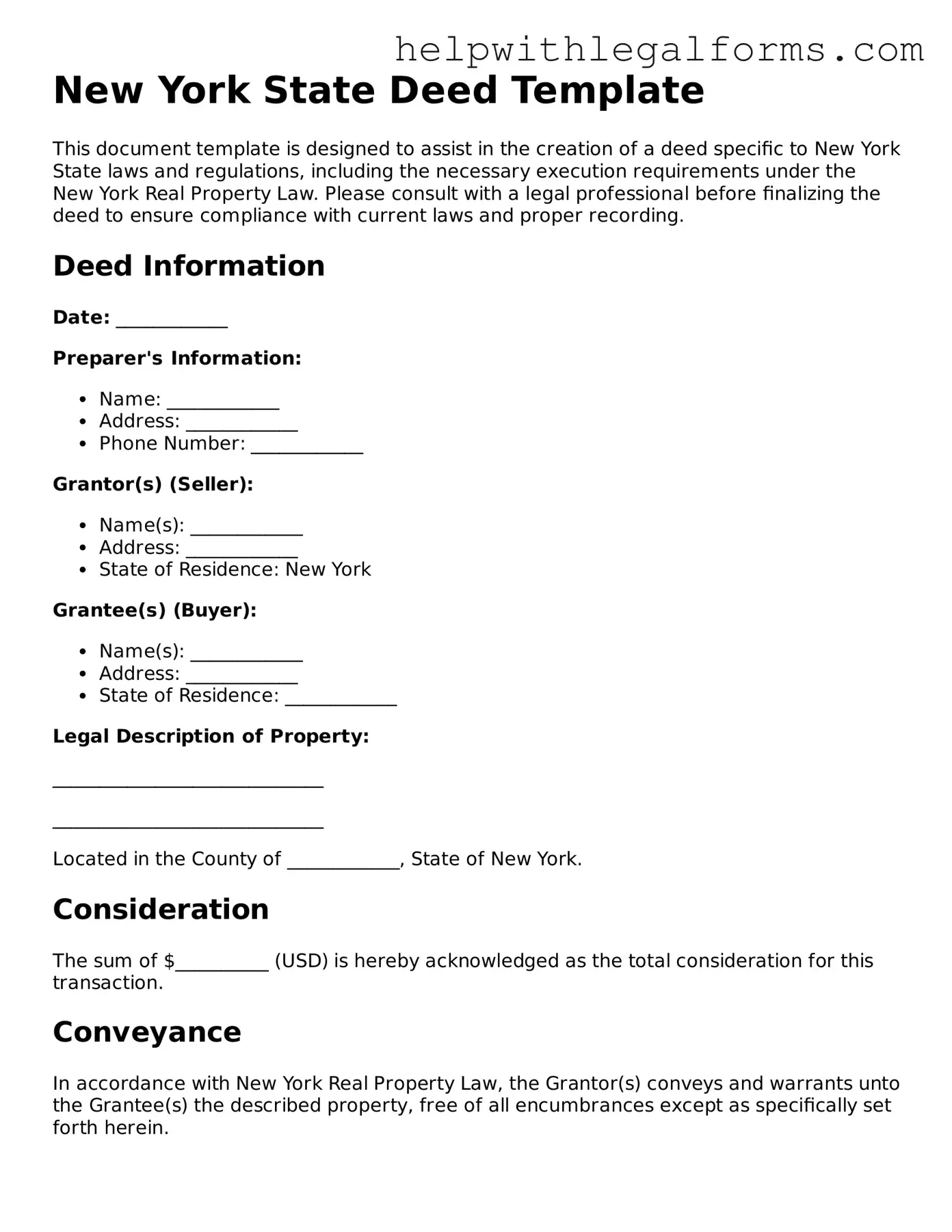What is a New York Deed form?
A New York Deed form is a legal document used to transfer property ownership from one party, known as the grantor, to another, known as the grantee, within the state of New York. This document is necessary for the legal conveyance of real estate and must be properly completed, signed, and recorded to be valid.
What are the different types of Deed forms available in New York?
In New York, there are primarily three types of Deeds used to transfer property: the Warranty Deed, which guarantees the buyer that the property is free from any liens or claims; the Quitclaim Deed, which transfers only the interest the seller has in the property without any warranties; and the Special Warranty Deed, which only warrants against claims made during the seller's ownership. Each type serves different purposes depending on the transaction.
Where can one obtain a New York Deed form?
New York Deed forms can be obtained from several sources including online legal document providers, local county clerk's office where the property is located, or by consulting with a legal professional specializing in real estate law. Choosing the correct form and ensuring its completeness is crucial, thus seeking professional advice is recommended.
What information is required to complete a Deed form in New York?
To complete a Deed form in New York, information such as the full legal names and addresses of the grantor and grantee, a complete legal description of the property, the consideration or purchase price, and the signature of the grantor in front of a notary public is required. Additional details might be necessary depending on the county where the property is located.
Is a lawyer required to fill out a Deed form in New York?
While it is not strictly required to have a lawyer to fill out a Deed form in New York, it is highly advisable. Real estate transactions can be complex, and having a legal professional ensures that the Deed is correctly completed and that the transfer of property is legally binding. A lawyer can also advise on the implications of the different types of Deeds.
How does one record a Deed in New York?
Once signed and completed, a Deed must be recorded with the county clerk's office where the property is located. Recording the Deed provides public notice of the property transfer and is necessary for the Deed to be considered valid. The process involves submitting the Deed to the clerk’s office along with any required fees and taxes, and possibly additional documents depending on local regulations.
What are the fees associated with recording a Deed in New York?
The fees for recording a Deed in New York vary by county and may include a recording fee based on the number of pages, as well as transfer taxes depending on the property’s sale price. Additional fees could apply for supplemental documents required for recording. It is advisable to contact the local county clerk’s office for the specific fee schedule.
Can a Deed be challenged or revoked after it has been recorded in New York?
Yes, a Deed can be challenged or revoked after recording under certain circumstances, such as if it was signed under duress, fraud was involved in the transaction, or if there were issues with the grantor's legal capacity to transfer the property. Challenges to a Deed require legal proceedings and it is highly recommended to consult with a legal professional specializing in real estate or contract law to address such concerns.
